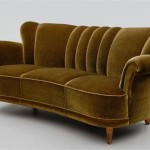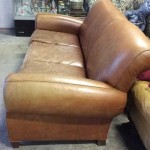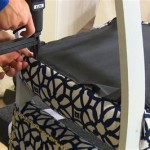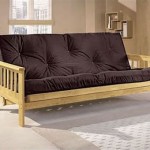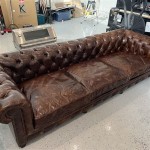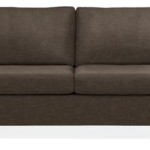What Are Deep Sofas Called?
The term "deep sofa" is a generally understood descriptor, but the furniture industry employs a variety of terms, some more specific than others, to refer to sofas with an extended seat depth. This article explores the common names and classifications used to describe these comfortable and spacious seating arrangements, providing a comprehensive overview of the terminology utilized in the furniture market.
The increased seat depth distinguishes deep sofas from their standard counterparts. This characteristic offers enhanced comfort and versatility, allowing users to sit upright, lounge back, or even curl up comfortably. This wider seating area appeals to individuals seeking a more relaxed and informal seating experience.
Understanding the terminology used for deep sofas is crucial for consumers seeking to purchase one. This knowledge assists in navigating online descriptions, communicating effectively with sales representatives, and ensuring the chosen sofa aligns perfectly with desired comfort and stylistic preferences. The following sections delve into the common terms used to describe deep sofas and the nuances associated with each.
Common Terms and Classifications
Several terms are used interchangeably with "deep sofa," although some carry subtle implications regarding style or construction. Examining these alternatives provides a wider understanding of the options available.
Overstuffed Sofa: This term generally refers to sofas with generous padding and cushioning. While not exclusively referring to depth, many overstuffed sofas feature a deeper seat to accommodate the extra padding. The emphasis here is on the overall plushness and comfort level. Often, overstuffed sofas have rounded arms and backs, further contributing to the sense of enveloping comfort. The fabric choices for these sofas are usually soft and inviting, such as velvet, chenille, or a thick, textured weave.
Sectional Sofa: While not all sectional sofas are deep, many designs incorporate deeper sections to create a more lounge-like experience. Sectionals are composed of multiple independent pieces that can be arranged in various configurations, offering flexibility in room layout. U-shaped and L-shaped sectionals frequently feature a chaise or extended cushion, effectively creating a deep seating area. The depth of individual sections within a sectional can vary, so it is important to check the specific dimensions when considering this type of sofa.
Lounge Sofa: This term explicitly highlights the intended purpose of the sofa: relaxation and lounging. Lounge sofas typically prioritize comfort and often feature a deeper seat depth to facilitate this. They may also have features such as reclining mechanisms or adjustable headrests. The design aesthetic is generally more casual and inviting than formal sofas, with softer lines and less structured silhouettes. Fabrics are often chosen for their comfort and durability, suitable for frequent use and lounging.
Modular Sofa: Similar to sectionals, modular sofas consist of individual units that can be combined to create various configurations. The key difference often lies in the flexibility and ease of rearranging the modules. Many modular sofas offer deeper seat options, allowing for the creation of customized lounging spaces. The modular nature allows for the sofa to adapt to changing needs and room layouts. Individual modules can be added or removed, and the configuration can be easily altered to suit different occasions or preferences.
Sofa with Extended Depth: This is a more descriptive and straightforward term, clearly indicating that the sofa has a deeper seat than standard models. This terminology is frequently used in online product descriptions and furniture catalogs to highlight this specific feature. The use of precise measurements is common when using this term, allowing customers to easily compare different models and determine the ideal depth for their needs.
Factors Influencing Perceived Depth
While the physical dimensions of the sofa are the primary determinant of depth, several other factors contribute to the perceived depth and overall comfort.
Back Cushion Design: Thicker back cushions significantly reduce the available seating depth. If the design incorporates large, plush back cushions, the actual usable depth will be less than the overall frame depth. Conversely, thinner or more streamlined back cushions maximize the seating area. Some deep sofas feature loose back cushions, allowing users to adjust the cushions to their preferred position or even remove them entirely for an even deeper seating experience.
Arm Style: The arm style also affects the perceived depth. Rolled arms or oversized arms can intrude into the seating area, reducing the available space. Lower profile or track arms provide a more streamlined silhouette and maximize the usable depth. Armless sofas, or sofas with very minimal arms, offer the greatest seating area and a more modern aesthetic. The choice of arm style is a critical design consideration that influences both the comfort and the overall visual appeal of the sofa.
Seat Cushion Fill: The type of fill used in the seat cushions significantly impacts comfort and support. Down-filled cushions offer a luxurious, sink-in feeling, while foam cushions provide more support and resilience. A combination of foam and down, or foam and fiber, is a common approach, offering a balance of comfort and durability. The density and compression of the cushion fill also affect the perceived depth. Softer cushions tend to compress more, providing a deeper, more enveloping feel, while firmer cushions maintain their shape and offer more support.
Frame Construction: The quality of the frame construction is crucial for the long-term durability and stability of the sofa. A sturdy frame ensures that the sofa can withstand regular use and maintain its shape over time. Kiln-dried hardwood frames are generally considered the most durable option, resisting warping and cracking. The type of suspension system used in the frame also affects comfort and support. Coil springs, sinuous springs, and web suspension are common options, each offering different levels of support and resilience. The frame construction is a fundamental aspect of sofa design that directly impacts the overall quality and longevity of the piece of furniture.
Measuring and Identifying Deep Sofas
Accurately measuring and identifying a deep sofa involves understanding the key dimensions and specifications to look for. This ensures the chosen sofa fits the intended space and offers the desired level of comfort.
Seat Depth Measurement: The most critical measurement for determining if a sofa is "deep" is the seat depth. This is measured from the front edge of the seat cushion to the back of the back cushion. Standard sofas typically have a seat depth of around 21-23 inches. Deep sofas, conversely, will have a seat depth of 24 inches or more, and some models can exceed 40 inches. This extra depth allows for more comfortable lounging and the ability to sit with legs extended.
Overall Depth Measurement: While the seat depth is the key indicator, the overall depth of the sofa should also be considered. This is measured from the front of the sofa to the back, including the frame and any overhanging elements. A larger overall depth generally indicates a deeper seat, but it is important to confirm the seat depth measurement specifically. The overall depth also influences how much space the sofa will occupy in the room, so it is essential to consider this dimension when planning the layout.
Product Specifications: Online product descriptions and furniture catalogs should provide detailed specifications, including the seat depth, overall depth, width, and height of the sofa. Reviewing these specifications carefully is crucial to ensure the sofa meets your needs and preferences. If the specifications are unclear or incomplete, contacting the retailer or manufacturer for further information is recommended. Accurate and detailed specifications are essential for making an informed purchase decision and avoiding any surprises upon delivery.
Visual Inspection: If possible, physically inspecting the sofa before purchasing is highly recommended. This allows you to assess the comfort, quality, and overall appearance of the sofa firsthand. Pay attention to the seat depth, the feel of the cushions, and the sturdiness of the frame. Sit on the sofa in different positions to determine if it offers the desired level of comfort and support. A visual inspection provides valuable insights that may not be apparent from online descriptions or photographs.
Understanding the various terms used to describe deep sofas and the factors influencing perceived depth empowers consumers to make informed decisions. Careful consideration of these aspects ensures the selection of a sofa that meets individual needs and enhances the comfort and style of the living space.

Sofa Secrets How To Choose The Right Seat Depth And Cushions

15 Best Extra Deep Sofas Of 2024 Tested And Reviewed

15 Best Extra Deep Sofas Of 2024 Tested And Reviewed

15 Best Extra Deep Sofas Of 2024 Tested And Reviewed

15 Best Extra Deep Sofas Of 2024 Tested And Reviewed

Lounge Deep Sofa 93 Reviews Crate Barrel

The 15 Best Deep Sofas Of 2024

15 Deep Cozy Couches 2024 Comfiest Sofas For Lounging Apartment Therapy

Ventura Extra Deep Sofa 2 Piece Couch Z Gallerie

Sofa Secrets How To Choose The Right Seat Depth And Cushions
Related Posts

